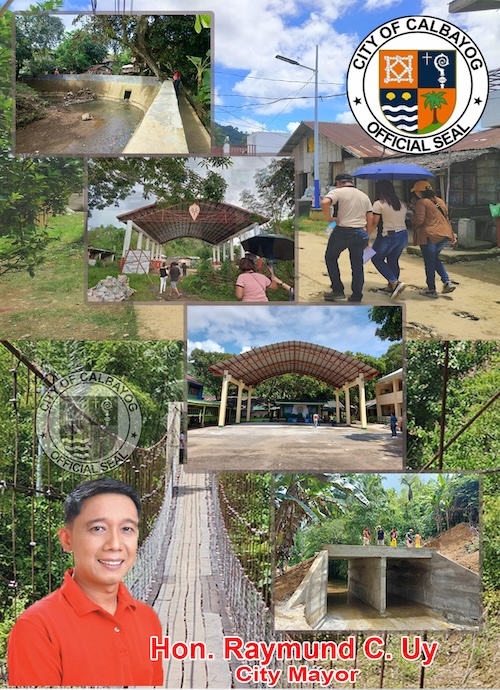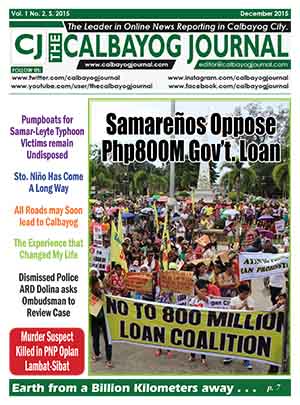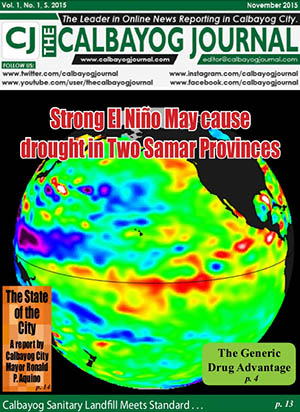Story/Photos: ALREN BERONIO

Despite the inroads of modernity in the lives of Borongan City residents, a distinctive community is still able to preserve its unique ancestral traditions. In Barangay Locsoon, a timeless practice known as "Gamit" continues to thrive for more than a century now.
"Gamit" carries a profound Binisaya connotation that goes beyond its literal meaning. It signifies “pagamit ha baybay” or “to use the beach” and to “prepare” foods. It embodies the age-old concept of "pag tutuman” or fulfillment of pledges made to dead ancestors.
The heart of this tradition is a thanksgiving celebration, a gathering that unites the living and honors the dead. Every year, as August's full moon graces the night sky, Locsoon residents convene along the beachfront for the ritual.
"Gamit" carries a profound Binisaya connotation that goes beyond its literal meaning. It signifies “pagamit ha baybay” or “to use the beach” and to “prepare” foods. It embodies the age-old concept of "pag tutuman” or fulfillment of pledges made to dead ancestors.
The heart of this tradition is a thanksgiving celebration, a gathering that unites the living and honors the dead. Every year, as August's full moon graces the night sky, Locsoon residents convene along the beachfront for the ritual.
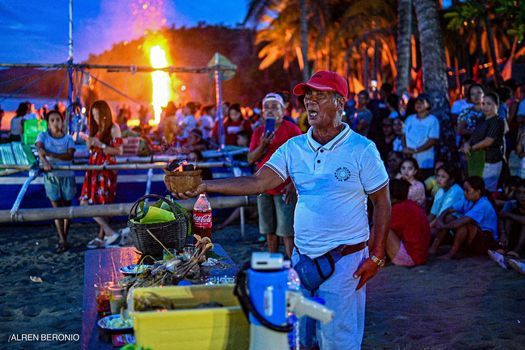
In the celebration, the residents congregate for the feast laid out not just for the living but also for the departed members of the community as a tangible manifestation of gratitude for their wisdom and guidance.
The offerings to the dead ancestors can sometime include native chickens – along with tobacco and the golden-hued "dulaw nga kan-on" (a traditional yellow rice dish.)
For Arceno Alegre, an esteem leader who guides the rituals of Gamit, the term itself holds profound significance.
Persons like him, he believes, should be torchbearers of this cherished tradition. His devotion, in fact, is a flame ignited by his father in the past. Names of ancestors like “Apoy Galvez, Almerinia, and Mahimina Solimne” are involed during the Gamit ritual, embodying the collective memory of the past and present generations and the commitment to upholding this treasured heritage.
However, Gamit is not just a commemoration of past persons or events. It is also a heartfelt plea for guidance and blessings where prayers are offered for the well-being of the Locsoon community.
The offerings to the dead ancestors can sometime include native chickens – along with tobacco and the golden-hued "dulaw nga kan-on" (a traditional yellow rice dish.)
For Arceno Alegre, an esteem leader who guides the rituals of Gamit, the term itself holds profound significance.
Persons like him, he believes, should be torchbearers of this cherished tradition. His devotion, in fact, is a flame ignited by his father in the past. Names of ancestors like “Apoy Galvez, Almerinia, and Mahimina Solimne” are involed during the Gamit ritual, embodying the collective memory of the past and present generations and the commitment to upholding this treasured heritage.
However, Gamit is not just a commemoration of past persons or events. It is also a heartfelt plea for guidance and blessings where prayers are offered for the well-being of the Locsoon community.
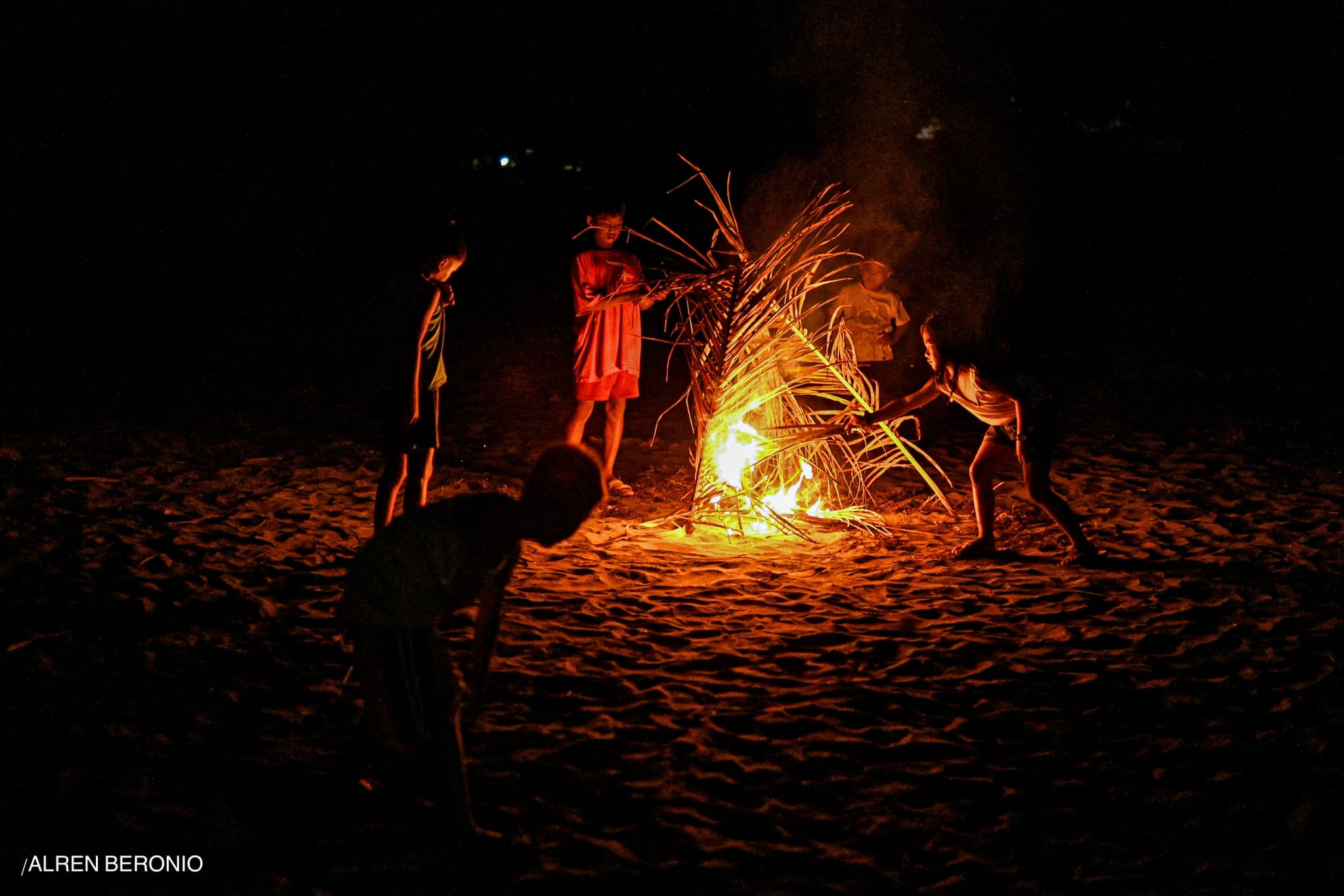
As the beach bonfire crackles, young Locsoanons take turns in casting dried leaves into the flames.
This cherished cultural practice extends beyond the shores of the Locsoon beachfront. In Divinubo Island, the tradition lives on under a different name: "Katig-uban." Here, the same procedures of the Gamit are meticulously observed, echoing the time-honored customs of their ancestors every final Saturday of August, the islanders gather, and the age-old procedure is reverently followed.
In a world where change is constant and rapid, the flame of Gamit continues to burn brightly— a testament to the enduring power of heritage and the enduring bond between generations. As the August full moon rises each year, the community of Locsoon stands together, offering their gifts to the universe and receiving the wisdom of their elders in return.(CJ/AB)
This cherished cultural practice extends beyond the shores of the Locsoon beachfront. In Divinubo Island, the tradition lives on under a different name: "Katig-uban." Here, the same procedures of the Gamit are meticulously observed, echoing the time-honored customs of their ancestors every final Saturday of August, the islanders gather, and the age-old procedure is reverently followed.
In a world where change is constant and rapid, the flame of Gamit continues to burn brightly— a testament to the enduring power of heritage and the enduring bond between generations. As the August full moon rises each year, the community of Locsoon stands together, offering their gifts to the universe and receiving the wisdom of their elders in return.(CJ/AB)
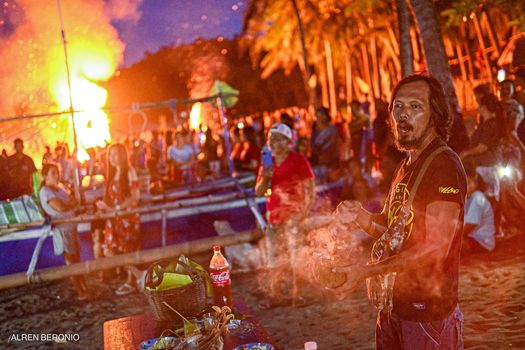
NOTE: The offering of prayers for the dead is part of the Catholic doctrine on the Communion of Saints— the saints in heaven, the saints on earth, and the saints being purified in Purgatory. Care should be taken so that this present practice of Gamit will not be misconstrued as “ancestor worship”— which is a non-Catholic and pagan practice. Every communication or connection with the dead, whether with those in Heaven or those in Purgatory, should be understood and practiced only within the bounds of right Catholic doctrine.





